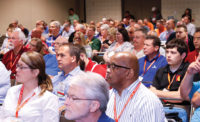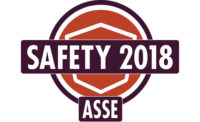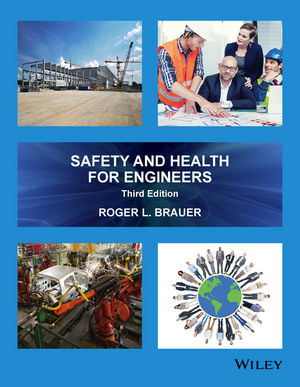
The American Society of Safety Engineers (ASSE) reported that the ASSE Baltimore Professional Development Conference had 3,600 attendees by the second day, Tuesday June 15. This is the second-largest attendance ever, second only to the 2008 Las Vegas PDC with 3,859. ASSE has been conducting PDCs since 1968 - when 145 pioneer pros showed up on the campus of Michigan State.
The ASSE Baltimore 2010 Expo held in conjunction with the PDC broke a record and is ASSE's largest ever in terms of floor space, with 61,600 square feet sold to 399 exhibitors.
RECESSION PART 2
Driving conversations among pros at the ASSE meeting was concern about jobs, job, jobs. Pros are no different than U.S. consumers, who are holding back on spending out of concern for jobs, jobs, jobs.
Every safety and health pro probably knows a peer out of work, worries about his or her own company’s future cost-cutting, or is out of work themselves.
Another worry: Many jobs posted are a lower salary. Salaries might never return to pre-recession highs. Safety pros aren’t alone here.
BIG PICTURE WORRY:
If the big-paying EHS jobs largely disappear, and more aspects of safety programs become automated with software programs, who will be interested in entering the safety and health field in the future? Safety isn’t sexy. But it is being dumbed down, with more chores handled by line employees, techies, temp contractors and consultants. Again, safety pros aren’t alone here. Many jobs are being filled using creative staffing strategies that save money.
WHO'S NEXT?
Most speakers at the ASSE conference seem 40-45 years or older. A good number 50+. The profession needs an infusion of new thinking, new thought leaders. They exist, but not on a national stage such as the ASSE meeting. Associations such as ASSE and the American Industrial Hygiene Association groom future leaders in gatherings and mentoring programs. The field needs to know more about these newbies.
WHAT A DIFFERENCE A YEAR MAKES
Last year at the ASSE national meeting Labor Secretary Hilda Solis and acting OSHA boss Jordan Barab came on strong, using the meeting to launch the message that OSHA the cop is back on the beat (first said by Labor Secretary Elizabeth Dole during the Bush 41 term in the late ’80s).
This year, OSHA honcho Dr. David Michaels cut a less intimidating figure giving his speech to the ASSE crowd. The words were pretty much the same, but Dr. Michaels comes across as an informal academic. Don’t be fooled; he’s ready to fight for what he wants. He closed his speech saying: “We need to embrace the spirit of Mother Jones and ‘Mourn for the dead’ and ‘fight like hell for the living’." Mother Jones was a legendary activist and labor organizer in the early 20th century.
Dr. Michaels will have a furious fight on his hands, possibly in 2011 or whenever OSHA gets around to proposing the injury and illness prevention program rule. It’s Dr. Michaels’ number one priority. The idea is to require employers to find and fix hazards.
Here’s what scares business: When employers examine their OSHA injury logs, including a breakout of musculoskeletal disorders (MSDs), they will find they have numerous ergo hazards. At least in many workplaces. So employers will go out and fix the ergo hazards. Isn’t this a de facto ergo standard? The fight will erupt when the U.S. Chamber of Commerce and the National Association of Manufacturers get a whiff of the ergo elements of the proposal.
EXECS TO SAFETY PROS: MAKE US LOOK GOOD
Five corporate execs discussed the business of safety and how safety professionals can move up the corporate ladder during ASSE’s annual Executive Summit.
“We start at the top. Safety is a key core value,” said Bryan O’Connor, chief of safety and mission assurance for the National Aeronautics and Space Administration (NASA).
“We have 40,000 employees and we reach them through our leadership, which is very easy and doable. Safety is built into all performance contracts,” said Bill Ermatinger, vice president of human resources and administration at Northrop Grumman Shipbuilding. “And you also need to look at what your customers need. Our customers are the taxpayers and we need to make sure we produce quality products with little costs and safety is key.”
“Safety to us is a competitive advantage,” said Kathleen Shanahan, CEO and chair of the board for WRScompass, a company with a technical workforce of more than 600 employees dedicated to assisting businesses with the challenges of “going green”. “Safety impacts every part of business and businesses need to keep proactively challenging themselves when it comes to safety. See what your competitors are doing for instance, keep learning and educating yourselves. Be proactive and preventive.”
“Families don’t care about the business model,” Ermatinger said. “They want their relatives to come home safe, that’s what safety is.”
(Echoes of former Alcoa Chairman Paul O’Neill, who famously once said he’d fire the first accountant who came to him showing the cost-savings of a good safety program. O’Neill didn’t want employees thinking Alcoa embraced safety only to save bucks.)
“All mishaps are a big blow to us. When Challenger happened we paused and looked at what we could have prevented and prevent it from happening in the future. It greatly pains us when we lose a co-worker, family member, friend. We don’t want that to happen,” said NASA’s O’Connor. “We may not have the budgets or the resources, but we have the brains power to identify risks and provide solutions.”
Greg Hale, vice president of worldwide safety and accessibility for Disney Parks and Resorts talked about global responsibilities: “When we went to China we were told we’d have a great number of fatalities. Well, we had none. We instilled our safety culture and value of the worker with our project and it worked. Company values need to be imported into those countries. You need to work at it. It is hard, but it works.”
Execs also are concerned about the largely gray safety profession:
Said Ermatinger: “The demographics are what concern me. Fifty percent of our employees will be retiring soon which means much of our safety culture and experience will walk out the door. We need to continue to nurture that safety culture so that as new employees come in they will embrace it and continue to see the value in effective work safety programs.”
Asked how safety professionals can become part of the key management team, Shanahan said, “Communicate with your boss, such as sending them three or four key facts on safety and why they would make a difference each week, or develop a monthly letter to the CEO providing updates on safety and health, the programs and more.”
“Help make your leaders look good, said Hale. “It will all come back to you in a good way.”
2011: MONUMENTAL BIRTHDAY BASH
HEADS UP: Next year the American Society of Safety Engineers celebrates its 100th anniversary with the Professional Development Conference being held June 12-15, in ASSE’s headquarters city of Chicago.







